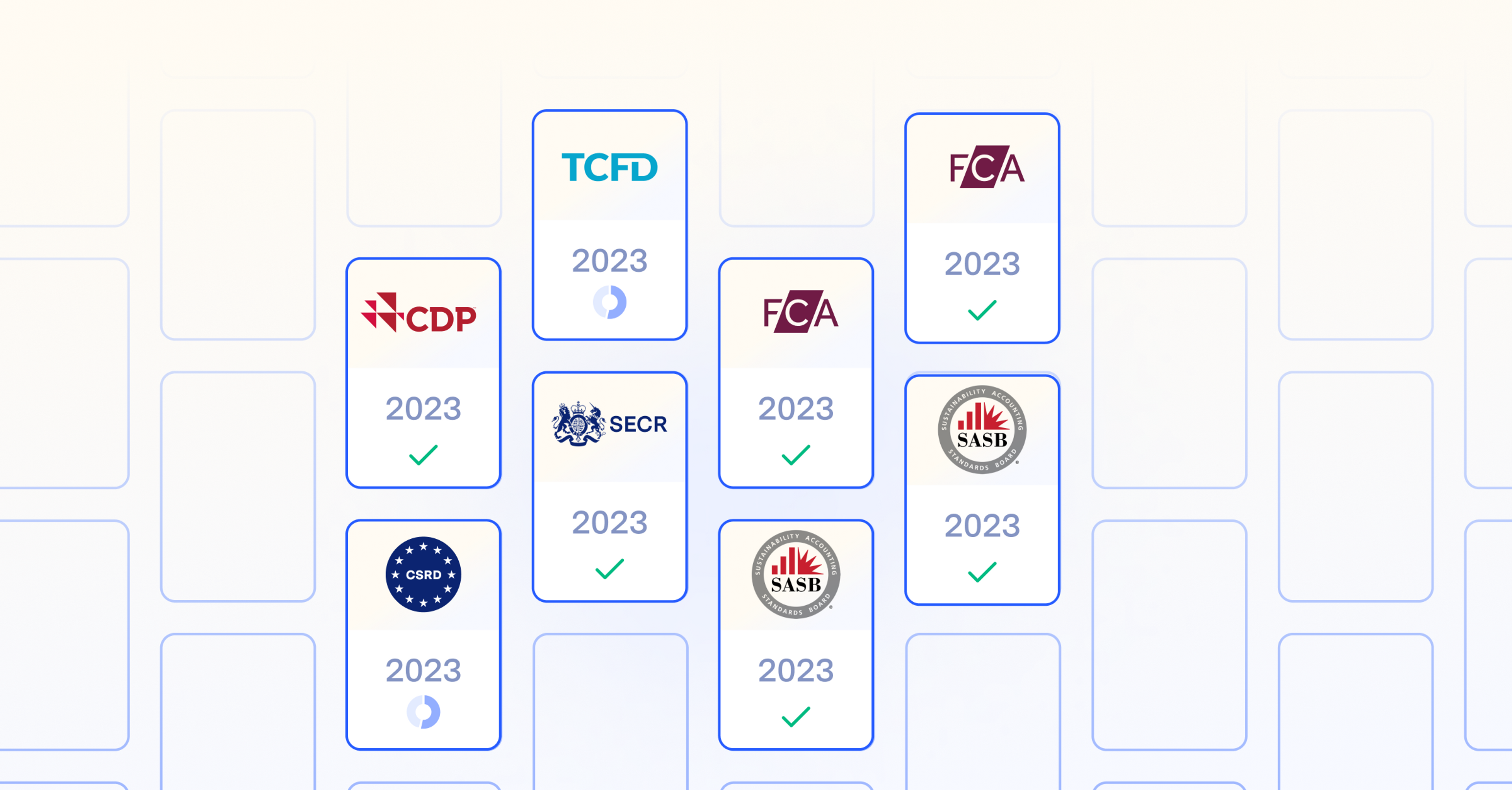Carbon accounting is the process of assessing an organization’s impact on the environment by calculating its emissions of carbon-based greenhouse gases. In general, emissions are calculated by multiplying business data (such as an employee travel budget or an office electric bill) by an “emissions factor,” or average emissions generated by that activity. Methods vary widely in their accuracy and granularity, however, so it’s important to understand the details behind the approach you choose.
Carbon accounting
Getting started with carbon accounting
Carbon accounting is the first step in accurately measuring, reporting, and reducing your company’s greenhouse gas emissions. Learn how carbon accounting works—and how to choose the right approach for your business.

Understanding your company’s environmental impact is critical in today’s climate economy—and carbon accounting makes it possible. While old methods of measuring carbon emissions were laborious and often imprecise, new tools and approaches enable companies to understand, report, and reduce emissions with greater speed and accuracy than previously possible—often at a fraction of the cost.
How to choose the right carbon accounting software for your business
When it comes to choosing a solution, how you evaluate your options depends on your business. Small, privately held companies calculating primarily for internal purposes (employee engagement, internal sustainability program) may only need to measure their carbon footprint once or twice a year; publicly traded or large private companies will need a more robust solution to prepare for audits and reporting, and drive real emissions reductions.
| Carbon accounting must-haves for smaller companies | Carbon accounting must-haves for public, large private, and/or global companies |
|---|---|
| ✅ Simple and/or manual data uploading and inputs | ✅ Automated data ingestion via integrations with existing business systems, as well as manual data upload capability |
| ✅ Single-region emissions models, such as US EEIO | ✅ Scope 1-3 emissions measurement |
| ✅ Scope 1-3 emissions measurement | ✅ Multi-region emissions models, such as CEDA |
| ✅ Manual data export for reporting or sharing with key stakeholders | ✅ Ability to conduct multiple measurements each year |
| ✅ One measurement at a time, likely 1-2 times per year | ✅ Reporting capabilities, such as data transformation and report preparation |
| ✅ Peer benchmarking | |
| ✅ Target-setting and reductions guidance | |
| ✅ Simulations and scenario planning | |
| ✅ Project management capabilities, such as guided data collection | |
| ✅ Complete audit trail and comprehensive data governance capabilities | |
| ✅ A proven track record of managing climate disclosure for large, highly regulated multinational corporations |
How Watershed calculates carbon emissions
Carbon accounting is often the first step companies take toward climate disclosure, compliance, and action—and with Watershed, it’s part of your complete enterprise sustainability platform. The world’s leading companies rely on Watershed for best-in-class emissions measurement and audit-ready carbon disclosures: When audited, 100 percent of Watershed customer footprints have passed, and we work with the world’s leading audit firms to regularly vet our methodologies.

Streamlined data collection
Collecting your carbon data doesn’t have to be painful. Watershed’s 60+ pre-built integrations can ingest data directly from your existing business systems—or, upload files in a variety of flexible formats. With embedded project management tools, we also streamline the process of getting data from various departments within your company. No matter what shape your data’s in, we’ll take it from here.
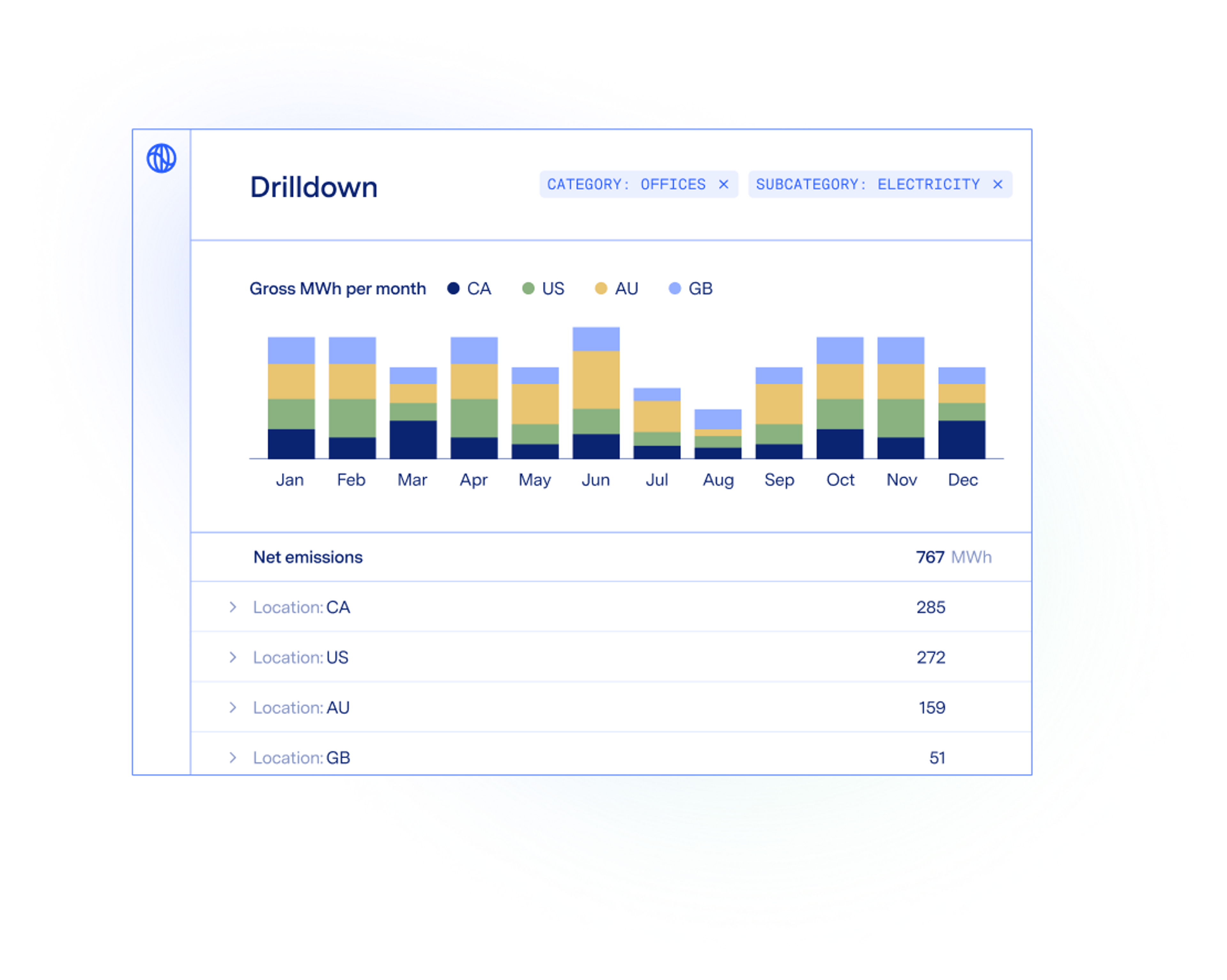
Audit-ready climate data
Once your data’s in Watershed, our proprietary carbon data engine automatically detects anomalies and helps you identify and fill any gaps. Next, our system assigns granular, science-based emissions factors based on tens of thousands of benchmarks and emissions models, including our pioneering multi-region CEDA model.
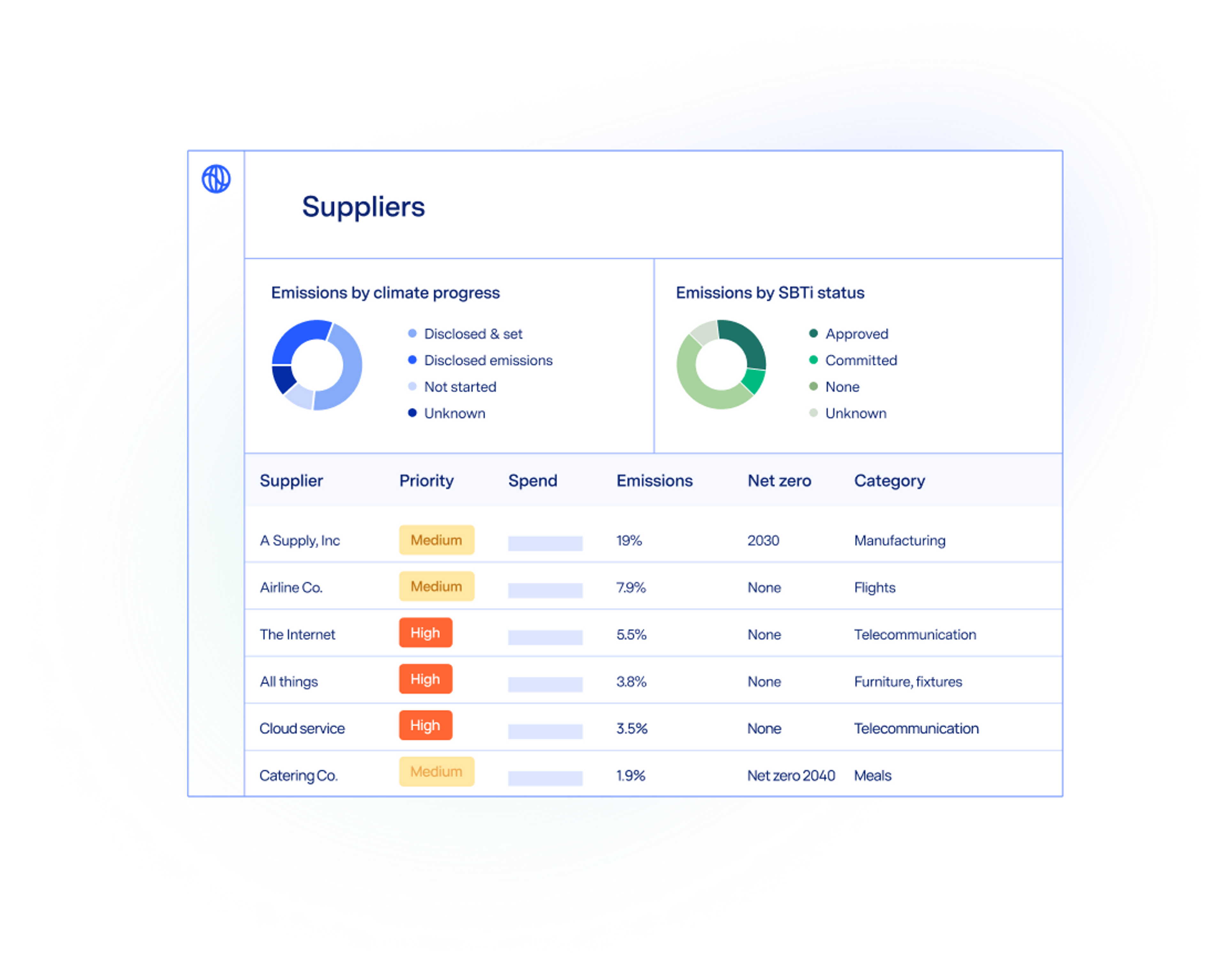
Supply chain engagement
For many companies, value chain emissions—known as Scope 3—can make up the majority of total emissions. Watershed analyzes emissions from all three scopes and offers integrated supplier engagement for companies seeking to reduce Scope 3 emissions.
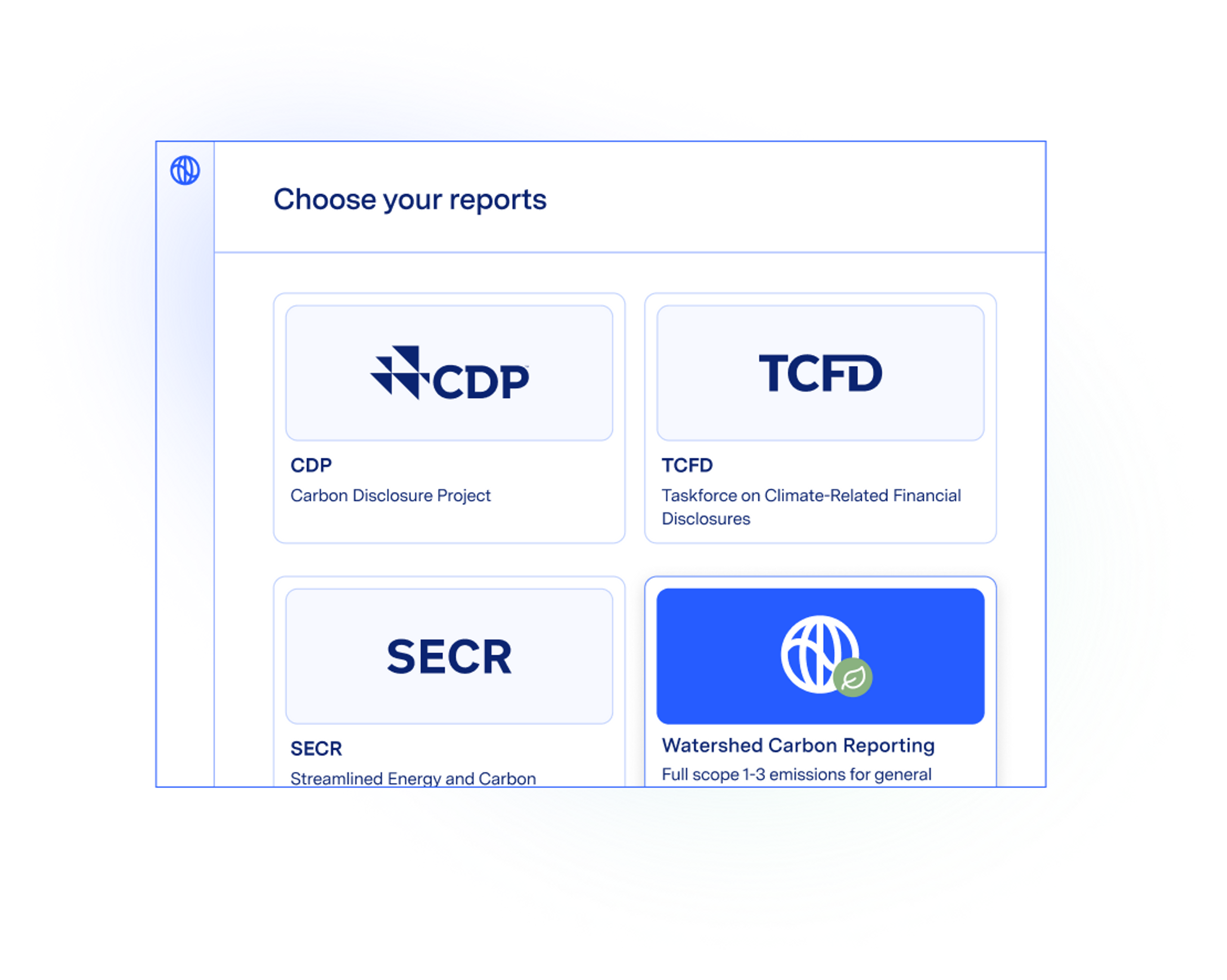
Integrated climate reporting
Disclosing your climate impact is a critical step on the road to environmental responsibility—and, for many companies, it’s also a regulatory requirement. Watershed Disclosures is an integrated toolset that guides you through your reporting obligations, automatically formats your data to match disclosure requirements, and eliminates duplicative work so reporting gets easier each time you do it.
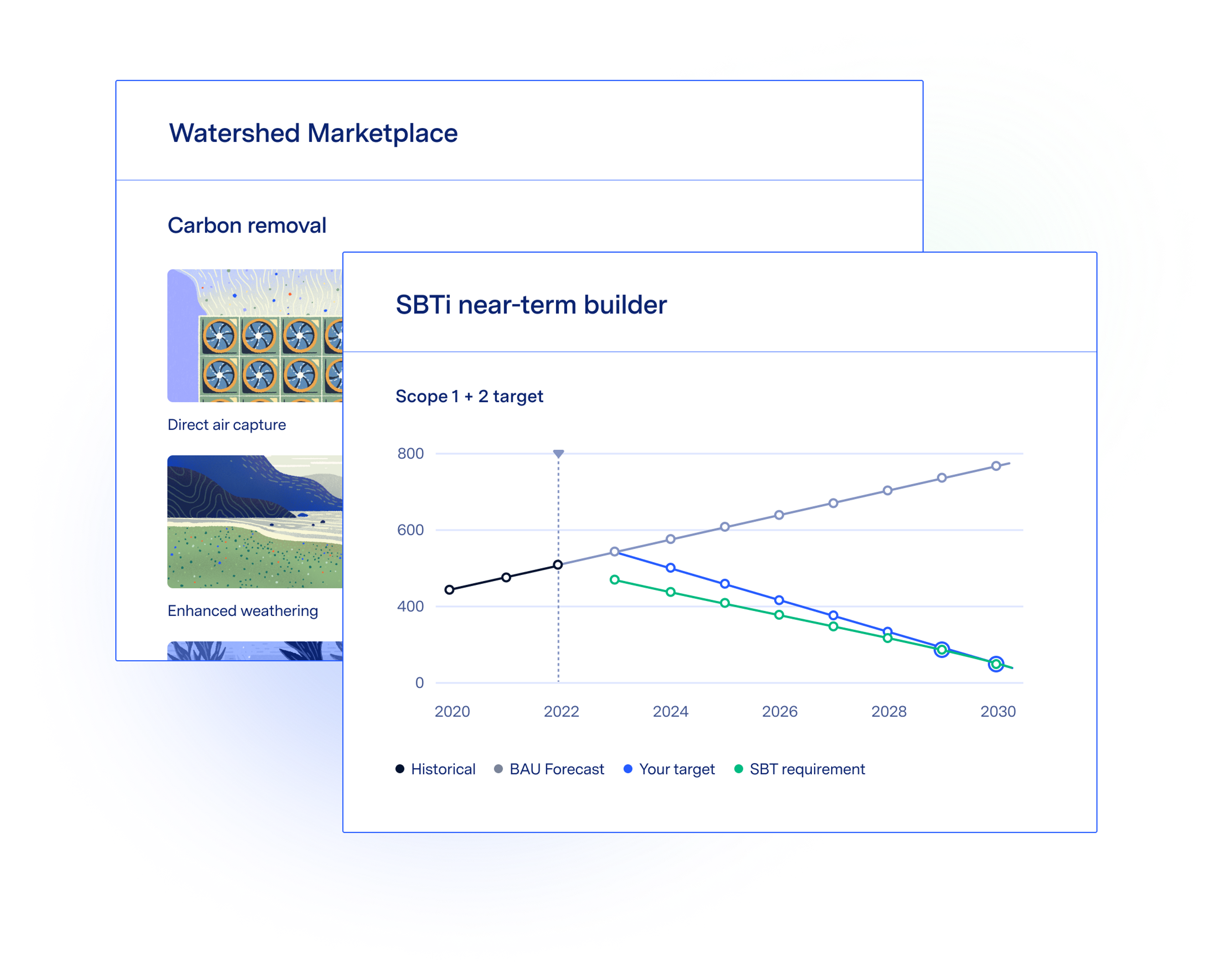
Target-setting & reductions
Many disclosure frameworks require more than just carbon accounting and reporting: They also call for data-based targets and reduction plans. With Watershed, you can use your carbon data to model different targets and outcomes, then choose the right goals and action plans for your business.
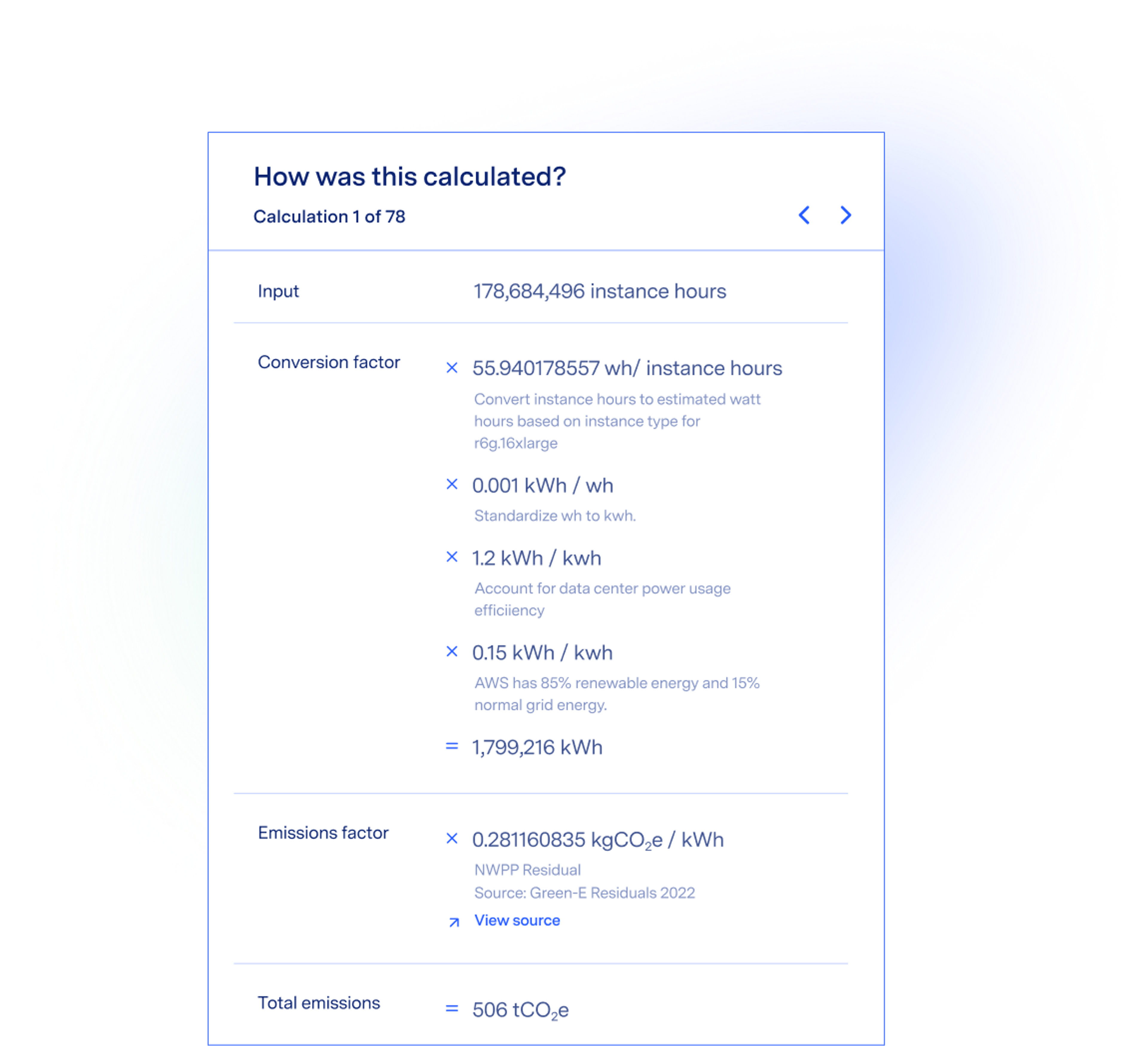
Enterprise data management
Watershed powers climate programs for some of the most complex, heavily regulated companies—and from the beginning, we’ve made enterprise-grade data security and governance our top priority. With Watershed, you get complete audit trails for all carbon data, full visibility into how each number was calculated, fine-grained access management, and advanced data security.
Powering climate programs for the world’s leading companies






